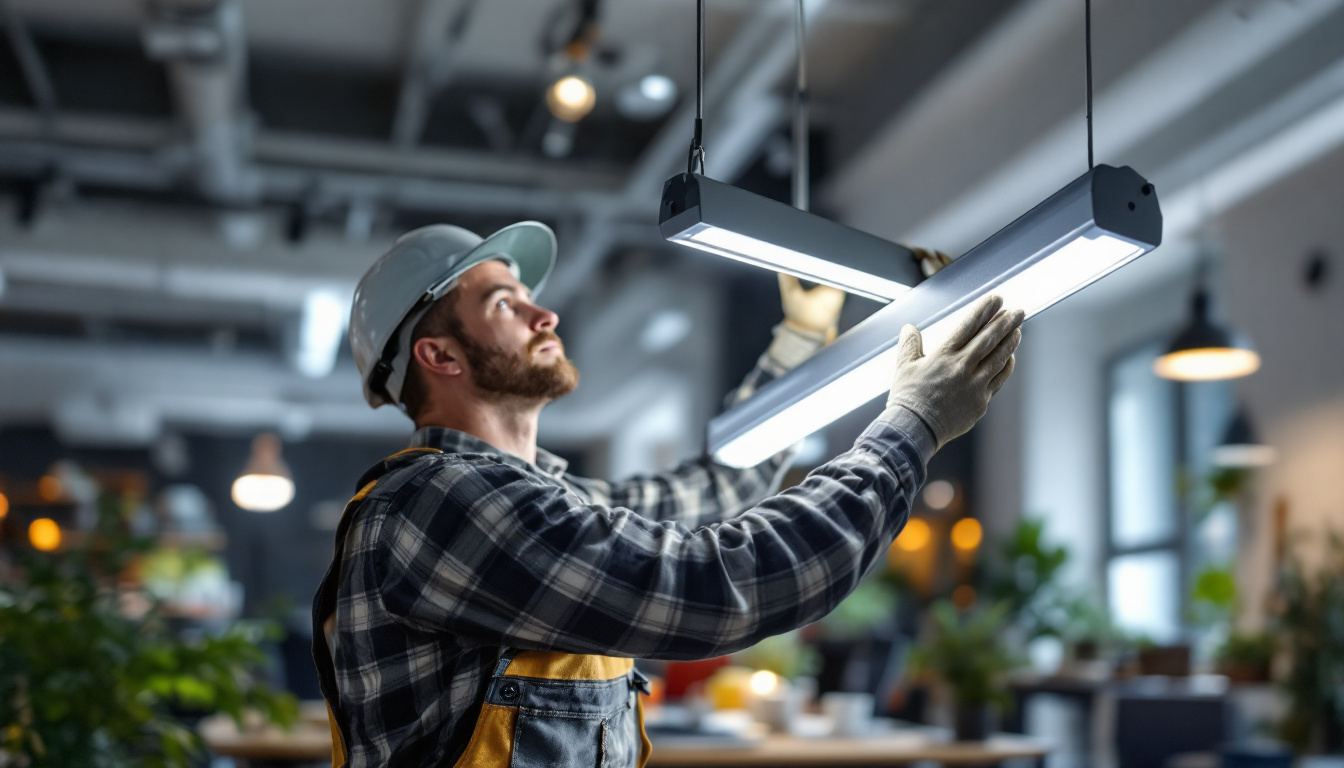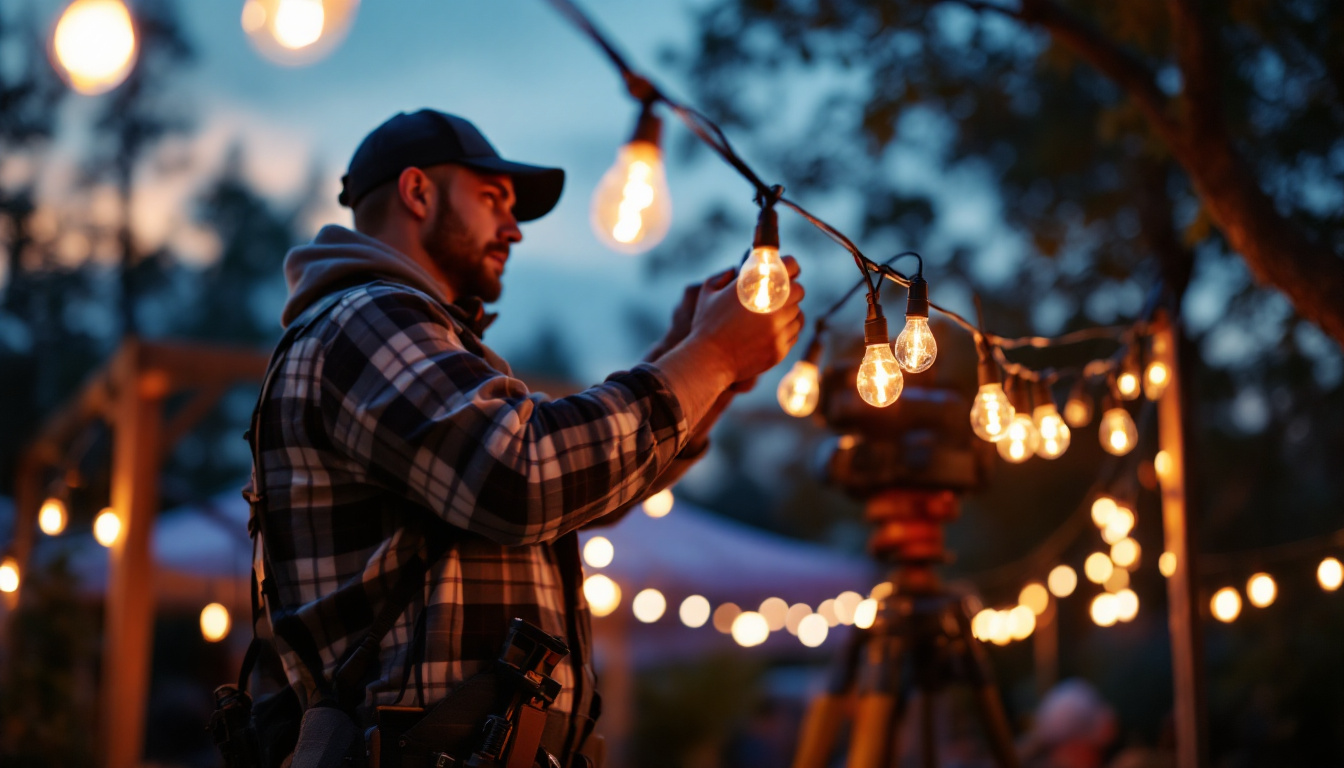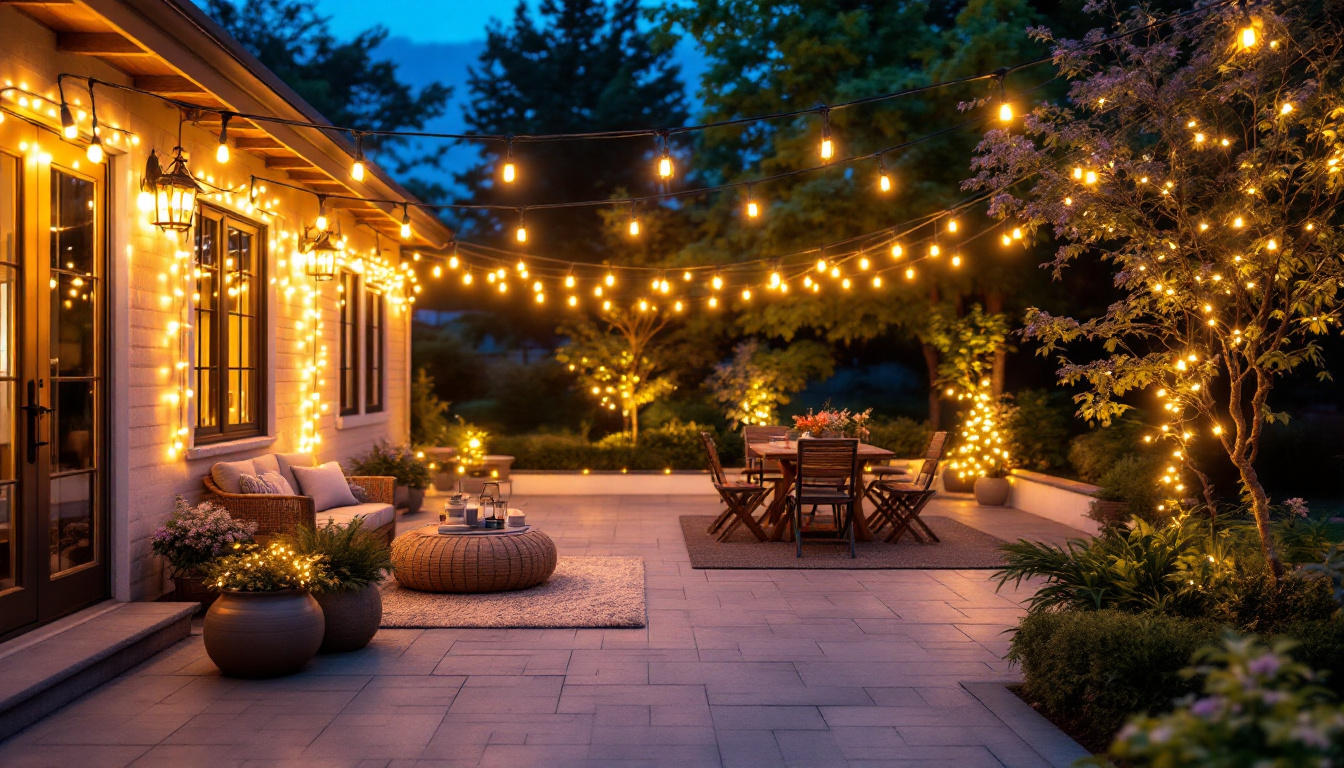
As a lighting contractor, ensuring that outdoor spaces are well-lit and safe is a critical aspect of your work. Flood lights serve as an essential tool in achieving this goal, providing both security and aesthetic enhancement to residential and commercial properties. This article presents a comprehensive checklist for contractors to consider when selecting and installing flood lights for outdoor use.
Flood lights are powerful lighting fixtures designed to illuminate large areas. They are commonly used in various settings, including parking lots, backyards, sports fields, and building facades. Their ability to provide broad and intense light makes them ideal for enhancing visibility and security during nighttime. In addition to their practical applications, flood lights can also serve aesthetic purposes, highlighting architectural features or landscaping elements, thus adding to the overall ambiance of a space.
Flood lights come in several types, each with unique features and benefits. The most common types include LED, halogen, and metal halide flood lights. LED flood lights are increasingly popular due to their energy efficiency, long lifespan, and lower heat output. They can last up to 50,000 hours, significantly reducing replacement costs and maintenance efforts. Halogen flood lights, while providing excellent color rendering, consume more energy and have a shorter lifespan, typically around 2,000 hours. Metal halide lights are known for their brightness and are often used in commercial applications, though they also have a higher energy consumption rate. Additionally, there are solar-powered flood lights available, which harness renewable energy, making them an eco-friendly option for outdoor lighting.
When selecting flood lights, several key features should be taken into account. These include brightness measured in lumens, color temperature, beam angle, and durability. A higher lumen output indicates a brighter light, which is crucial for security applications. For instance, a flood light with a lumen output of 3,000 or more is often recommended for large outdoor areas. Color temperature affects the ambiance of the space; warmer tones create a cozy atmosphere, while cooler tones enhance visibility. The beam angle determines how wide the light spreads, impacting the coverage area; a narrow beam is suitable for focused lighting, while a wider beam is ideal for general illumination. Lastly, durability is essential, especially for outdoor installations, where lights must withstand various weather conditions. Look for flood lights with an IP rating, which indicates their resistance to dust and water, ensuring they perform reliably in rain, snow, or extreme temperatures.
Proper planning is vital for the successful installation of flood lights. This involves assessing the area to be illuminated, determining the number of fixtures needed, and deciding on the optimal placement for maximum effectiveness.
Conducting a thorough site assessment is the first step in planning the installation. Evaluate the specific areas that require lighting, such as pathways, entrances, and parking lots. Consider any existing light sources that may affect the overall brightness and distribution of the new flood lights. Additionally, take note of any potential obstacles, such as trees or buildings, that could block the light. It’s also important to observe the natural light patterns throughout different times of the day and seasons, as this can provide insights into how shadows and light will interact with your flood lights. Documenting these observations will help in making informed decisions about where to position the fixtures for maximum effect.
Once the site assessment is complete, calculating the lighting needs becomes essential. This involves determining the total lumens required for the area based on its size and intended use. For instance, a residential backyard may require fewer lumens compared to a commercial parking lot. Utilizing lighting design software can help visualize how different configurations will affect the overall illumination. Additionally, it’s beneficial to consider the color temperature of the lights, as warmer tones can create a welcoming atmosphere for residential areas, while cooler tones may be more appropriate for commercial spaces where visibility and alertness are prioritized. Understanding the purpose of the lighting will guide you in selecting the right fixtures that not only meet the lumen requirements but also enhance the aesthetic appeal of the space.
The mounting height of flood lights significantly impacts their effectiveness. Generally, higher mounting heights provide broader coverage but may reduce the intensity of the light on the ground. Conversely, lower mounting heights offer more concentrated lighting but cover a smaller area. Striking the right balance is crucial for achieving optimal results. It’s also worth considering adjustable mounts that allow for flexibility in angling the lights to target specific areas or objects, which can be particularly useful in dynamic environments. Furthermore, take into account the potential for light pollution; ensuring that the flood lights are mounted at an appropriate height and angle can help minimize glare and unwanted light spillage into neighboring properties, promoting a more harmonious outdoor lighting experience.
Once the planning phase is complete, it’s time to proceed with the installation. Following a systematic approach ensures that the process runs smoothly and efficiently.
Before starting the installation, gather all necessary tools and materials. Common tools include a drill, screwdriver, wire cutters, and a ladder. Additionally, ensure that you have the appropriate flood lights, mounting brackets, and electrical wiring. Having everything ready beforehand minimizes delays and enhances productivity.
When installing flood lights, electrical considerations play a significant role. Ensure that the power supply is adequate to support the flood lights being installed. It may be necessary to consult with an electrician to verify that the existing wiring can handle the additional load. Furthermore, consider installing a timer or motion sensor to enhance energy efficiency and security.
With the electrical considerations addressed, proceed to mount the flood lights. Follow the manufacturer’s instructions for proper installation. Ensure that the fixtures are securely attached and positioned at the desired angle. After mounting, connect the wiring, taking care to follow safety protocols to prevent electrical hazards.
After installation, testing the flood lights is crucial to ensure they function as intended. This phase allows for any necessary adjustments to be made for optimal performance.
Turn on the flood lights to perform an initial test. Check for any dead spots or areas that may require additional lighting. Observing the light distribution during different times of the day can provide insights into how the lights perform in varying conditions. If certain areas remain poorly lit, consider adjusting the angle or adding additional fixtures.
Based on the initial testing, make any necessary adjustments. This may involve repositioning the flood lights or changing the settings on timers or sensors. It’s essential to ensure that the lights are not only effective but also aesthetically pleasing, as they contribute to the overall ambiance of the outdoor space.
Regular maintenance is vital for ensuring the longevity and effectiveness of flood lights. This section outlines essential maintenance practices that contractors should recommend to their clients.
Outdoor flood lights are exposed to various environmental elements, which can lead to dirt and debris accumulation. Regular cleaning is necessary to maintain optimal light output. Use a soft cloth or sponge to gently clean the fixtures, taking care not to damage any components. For stubborn dirt, a mild soap solution can be used, but avoid harsh chemicals that may corrode the materials.
Periodically inspect the flood lights for any signs of damage. This includes checking for cracked lenses, loose connections, or corrosion on electrical components. Addressing any issues promptly can prevent further damage and ensure the lights continue to function effectively.
For flood lights that use replaceable bulbs, keep track of their lifespan and replace them as needed. LED bulbs typically last longer than traditional bulbs, but it’s essential to monitor their performance. Encourage clients to have spare bulbs on hand for quick replacements when necessary.
Safety is paramount when working with outdoor lighting installations. Adhering to safety guidelines protects both the contractor and the client.
Before starting any installation, familiarize yourself with local building codes and regulations regarding outdoor lighting. Compliance with these codes ensures that the installation is safe and legal. This may include restrictions on light pollution or specific requirements for wiring and fixtures.
Electrical safety should always be a top priority. Ensure that all electrical connections are secure and protected from moisture. Use weatherproof fixtures and enclosures to prevent water ingress, which can lead to electrical failures or hazards. Always turn off the power supply before working on electrical components.
Implementing proper grounding and surge protection is essential to safeguard the lighting system from electrical surges. This can prevent damage to the fixtures and ensure a longer lifespan. Consult with an electrician to determine the best grounding practices for the specific installation.
Flood lights are an invaluable addition to any outdoor space, enhancing security and aesthetics. By following this comprehensive checklist, lighting contractors can ensure that they select the right fixtures, plan effective installations, and maintain the systems for optimal performance. Safety considerations and adherence to local codes further enhance the reliability of the installations. With careful planning and execution, contractors can provide clients with well-lit outdoor environments that meet their needs and exceed their expectations.
Ready to elevate your lighting installations with premium flood lights that combine quality and affordability? Look no further than LumenWholesale. Our spec-grade lighting products are designed to meet the highest industry standards, ensuring that your projects shine with reliability and high performance. With unbeatable wholesale prices and the convenience of free shipping on bulk orders, LumenWholesale is your go-to source for superior lighting without the inflated markups. Don’t compromise on quality or value; choose LumenWholesale for your lighting needs and experience the difference. Wholesale Lighting at the Best Value is just a click away.

Discover essential tips and best practices for lighting contractors working with fluorescent light fixtures.

Discover essential tips from lighting contractors on effectively using string construction lights.

Discover how string lights for outdoor patios can be a cost-effective solution for lighting contractors.

Discover how LED office light fixtures are transforming the lighting industry with energy savings up to 50%, improved productivity, and eco-friendly benefits.